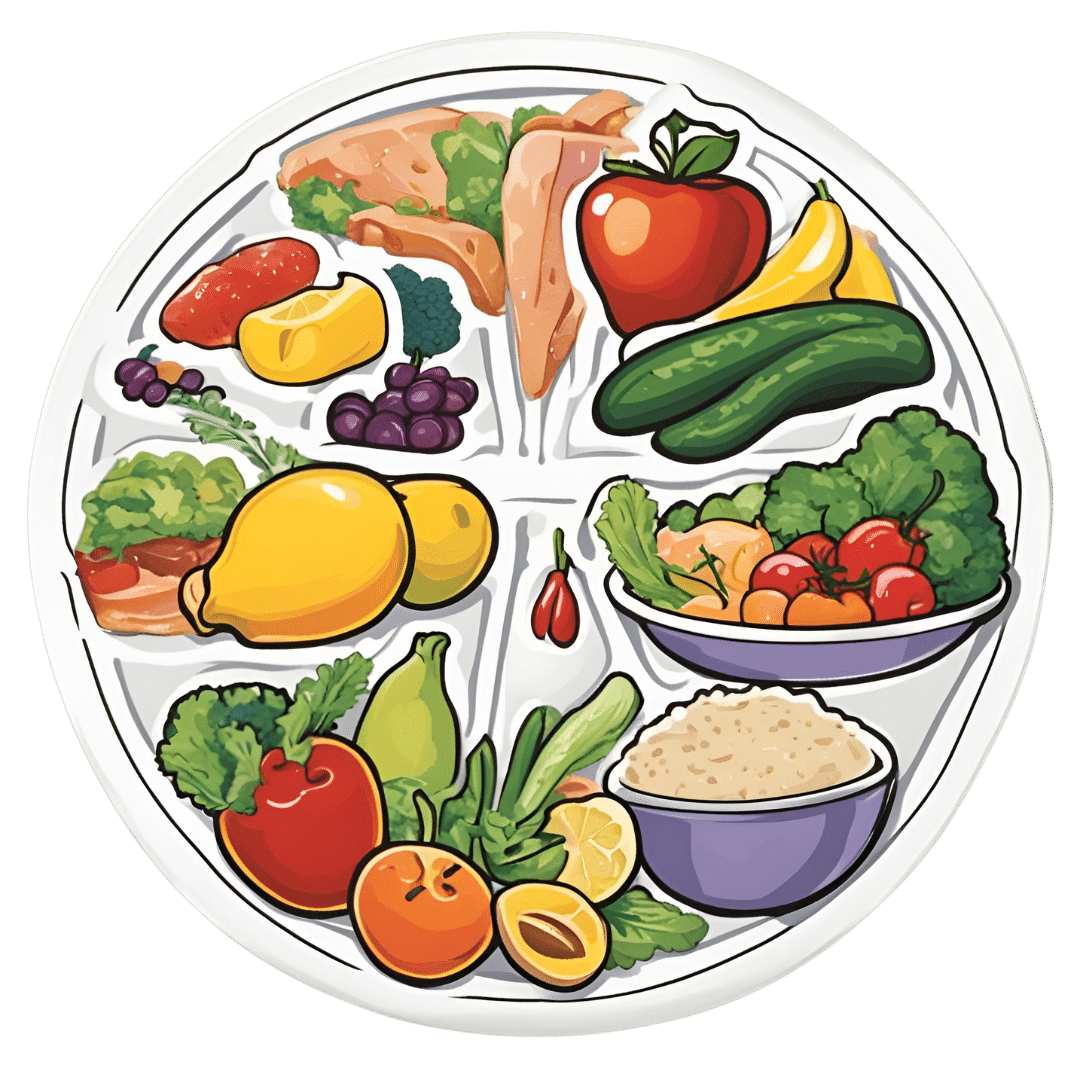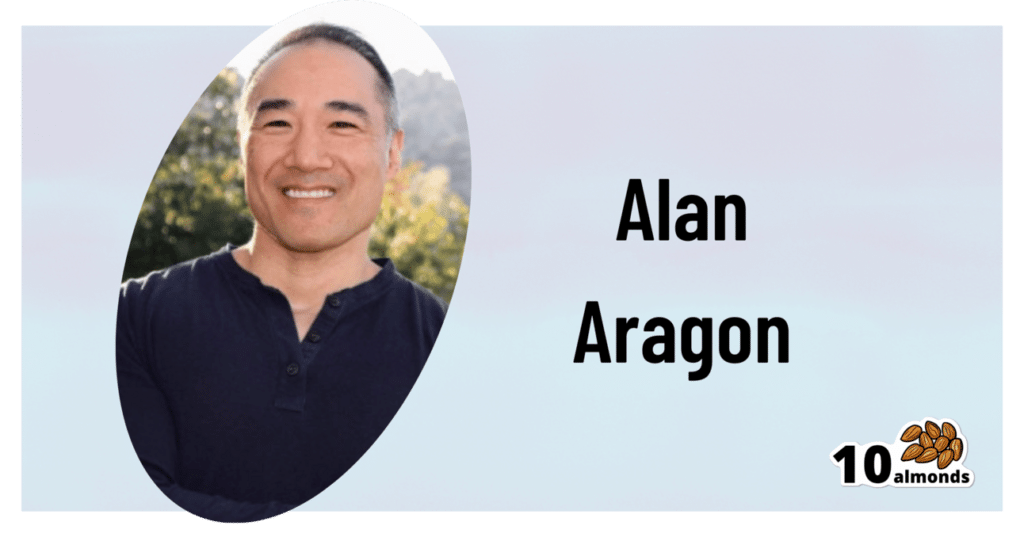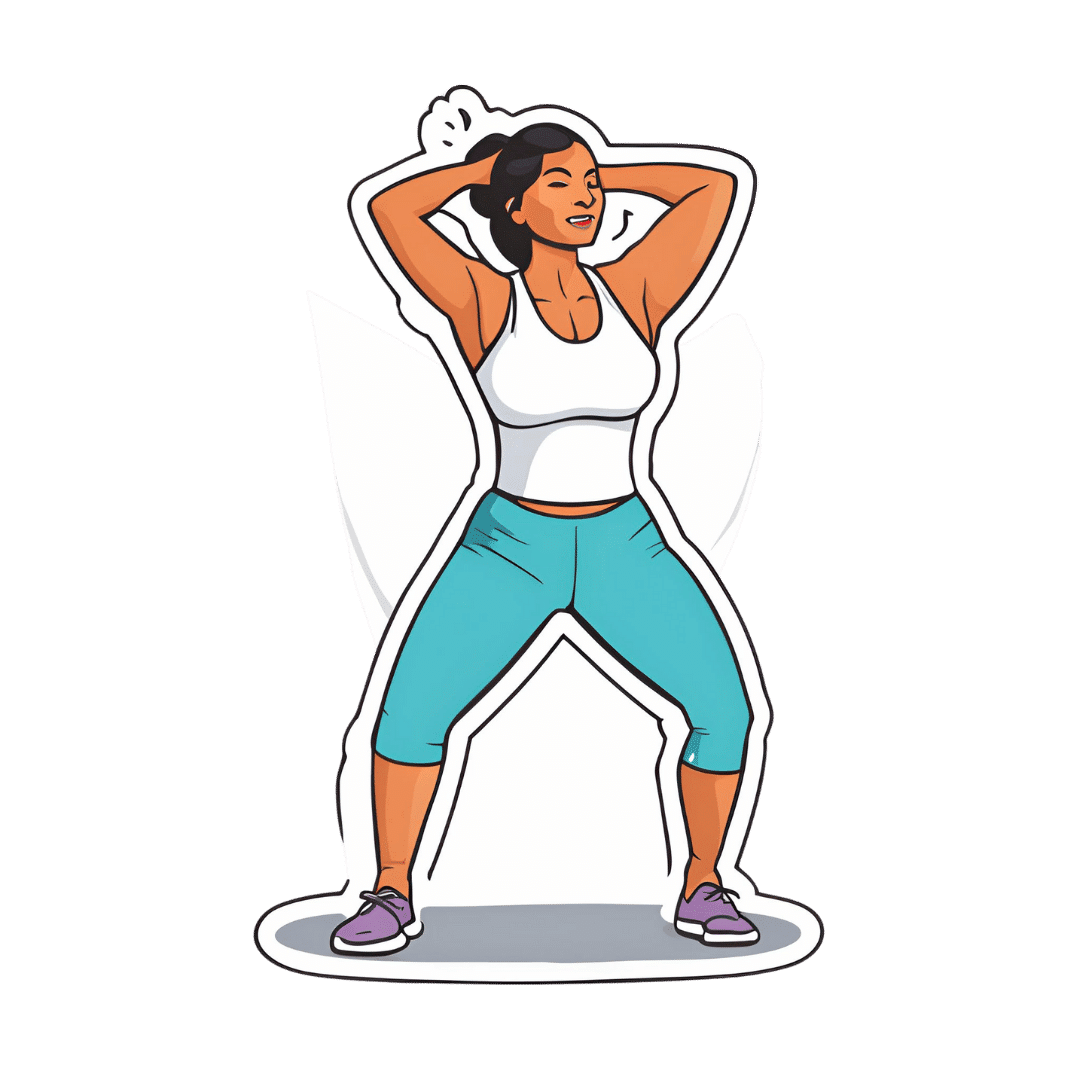
Cooling Bulgarian Tarator
10almonds is reader-supported. We may, at no cost to you, receive a portion of sales if you purchase a product through a link in this article.
The “Bulgarian” qualifier is important here because the name “tarator” is used to refer to several different dishes from nearby-ish countries, and they aren’t the same. Today’s dish (a very healthy and deliciously cooling cucumber soup) isn’t well-known outside of Bulgaria, but it should be, and with your help we can share it around the world. It’s super-easy and takes only about 10 minutes to prepare:
You will need
- 1 large cucumber, cut into small (¼” x ¼”) cubes or small (1″ x ⅛”) batons (the size is important; any smaller and we lose texture; any larger and we lose the balance of the soup, and also make it very different to eat with a spoon)
- 2 cups plain unsweetened yogurt (your preference what kind; live-cultured of some kind is best, and yes, vegan is fine too)
- 1½ cup water, chilled but not icy (fridge-temperature is great)
- ½ cup chopped walnuts (substitutions are not advised; omit if allergic)
- ½ bulb garlic, minced
- 3 tbsp fresh dill, chopped
- 2 tbsp extra virgin olive oil
- 1 tsp black pepper, coarse ground
- ½ tsp MSG* or 1 tsp low-sodium salt
Method
(we suggest you read everything at least once before doing anything)
1) Mix the cucumber, garlic, 2 tbsp of the dill, oil, MSG-or-salt and pepper in a big bowl
2) Add the yogurt and mix it in too
3) Add the cold water slowly and stir thoroughly; it may take a minute to achieve smooth consistency of the liquid—it should be creamy but thin, and definitely shouldn’t stand up by itself
4) Top with the chopped nuts, and the other tbsp of dill as a garnish
5) Serve immediately, or chill in the fridge until ready to serve. It’s perfect as a breakfast or a light lunch, by the way.
Enjoy!
Want to learn more?
For those interested in some of the science of what we have going on today:
- How To Really Look After Your Joints ← this is about how cucumber has phytochemicals that outperform glucosamine and chondroitin by 200%, at 1/135th of the dose
- Making Friends With Your Gut (You Can Thank Us Later)
- Is Dairy Scary? ← short answer in terms of human health is “not if it’s fermented”
- Why You Should Diversify Your Nuts!
- The Many Health Benefits Of Garlic
- Is “Extra Virgin” Worth It?
- Black Pepper’s Impressive Anti-Cancer Arsenal (And More)
- Monosodium Glutamate: Sinless Flavor-Enhancer Or Terrible Health Risk? ← *for those who are worried about the health aspects of MSG; it is healthier and safer than table salt
Take care!
Don’t Forget…
Did you arrive here from our newsletter? Don’t forget to return to the email to continue learning!
Recommended
Learn to Age Gracefully
Join the 98k+ American women taking control of their health & aging with our 100% free (and fun!) daily emails:

The Coffee-Cortisol Connection, And Two Ways To Tweak It For Health
10almonds is reader-supported. We may, at no cost to you, receive a portion of sales if you purchase a product through a link in this article.
Health opinions on coffee vary from “it’s an invigorating, healthful drink” to “it will leave you a shaking frazzled wreck”. So, what’s the truth and can we enjoy it healthily? Dr. Alan Mandell weighs in:
Enjoy it, but watch out!
Dr. Mandell is speaking only for caffeinated coffee in this video, and to this end, he’s conflating the health effects of coffee and caffeine. A statistically reasonable imprecision, since most people drink coffee with its natural caffeine in, but we’ll make some adjustment to his comments below, to disambiguate which statements are true for coffee generally, and which are true for caffeine:
- Drinking
coffeecaffeine first thing in the morning may not be ideal due to dehydration from overnight water loss. Coffeecaffeine is a diuretic, which means an increase in urination, thus further dehydrating the body.- Coffee contains great antioxidants, which are of course beneficial for the health in general.
- Cortisol, the body’s stress hormone, is generally at its peak in the morning. This is, in and of itself, good and correct—it’s how we wake up.
Coffeecaffeine consumption raises cortisol levels even more, leading to increased alertness and physical readiness, but it is possible to have too much of a good thing, and in this case, problems can arise because…- Elevated cortisol from early
coffeecaffeine drinking can build tolerance, leading to the need for morecoffeecaffeine over time. - It’s better, therefore, to defer drinking
coffeecaffeine until later in the morning when cortisol levels naturally drop. - All of this means that drinking
coffeecaffeine first thing can disrupt the neuroendocrine system, leading to fatigue, depression, and general woe. - Hydrate first thing in the morning before consuming
coffeecaffeine to keep the body balanced and healthy.
What you can see from this is that coffee and caffeine are not, in fact, interchangeable words, but the basic message is clear and correct: while a little spike of cortisol in the morning is good, natural, and even necessary, a big spike is none of those things, and caffeine can cause a big spike, and since for most people caffeine is easy to build tolerance to, there will indeed consistently be a need for more, worsening the problem.
In terms of hydration, it’s good to have water (or better yet, herbal tea) on one’s nightstand to drink when one wakes up.
If coffee is an important morning ritual for you, consider finding a good decaffeinated version for at least your first cup (this writer is partial to Lavazza’s “Dek Intenso”—which is not the same as their main decaf line, by the way, so do hold out for the “Dek Intenso” if you want to try my recommendation).
Decaffeinated coffee is hydrating and will not cause a cortisol spike (unless for some reason you find coffee as a concept very stressful in which case, yes, the stressor will cause a stress response).
Anyway, for more on all of this, enjoy:
Click Here If The Embedded Video Doesn’t Load Automatically!
Want to learn more?
You might also like to read:
Take care!
Share This Post
- Drinking

When You “Can’t Complain”
10almonds is reader-supported. We may, at no cost to you, receive a portion of sales if you purchase a product through a link in this article.
A Bone To Pick… Up And Then Put Back Where We Found It
In today’s Psychology Sunday feature, we’re going to be flipping the narrative on gratitude, by tackling it from the other end.
We have, by the way, written previously about gratitude, and what mistakes to avoid, in one of our pieces on positive psychology:
How To Get Your Brain On A More Positive Track (Without Toxic Positivity)
“Can’t complain”
Your mission, should you choose to accept it (and come on, who doesn’t like a challenge?) is to go 21 days without complaining (to anyone, including yourself, about anything). If you break your streak, that’s ok, just start again!
Why?
Complaining is (unsurprisingly) inversely correlated with happiness, in a self-perpetuating cycle:
Pet Peeves and Happiness: How Do Happy People Complain?
And if a stronger motivation is required, there’s a considerable inverse correlation between all-cause happiness and all-cause mortality, even when potential confounding factors (e.g., chronic health conditions, socioeconomic status, etc) are controlled for, and especially as we get older:
Investing in Happiness: The Gerontological Perspective
How?
You may have already formulated some objections by this point, for example:
- Am I supposed to tell my doctor/therapist “I’m fine thanks; how are you?”
- Some things are worthy of complaint; should I be silent?
But both of these issues (communication, and righteousness) have answers:
On communication:
There is a difference between complaining, and giving the necessary information in answer to a question—or even volunteering such information.
For example, when our site went down yesterday, some of you wrote to us to let us know the links weren’t working. There is a substantive difference (semantic, ontological, and teleological) between:
- ❝The content was great but the links in “you may have missed” did not work.❞ ← a genuine piece of feedback we received (thank you!)
- ❝Wasted my time, couldn’t read your articles! Unsubscribing, and I hope your socks get wet tomorrow!❞ ← nobody said this; our subscribers are lovely (thank you)
- Note that the former wasn’t a complaint, it was genuinely helpful feedback, without which we might not have noticed the problem and fixed it.
- The latter was a complaint, and also (like many complaints) didn’t even address the actual problem usefully.
What makes it a complaint or not is not the information conveyed, but the tone and intention. So for example:
“You’ve only done half the job I asked you to!” → “Thank you for doing the first half of this job, could you please do the other half now?”
Writer’s anecdote: my washing machine needs a part replaced; the part was ordered two weeks ago and I was told it would take a week to arrive. It’s been two weeks, so tomorrow I will not complain, but I will politely ask whether they have any information about the delay, and a new estimated time of arrival. Because you know what? Whatever the delay is, complaining won’t make it arrive last week!
On righteousness:
Indeed, some things are very worthy of complaint. But are you able to effect a solution by complaining? If not, then it’s just hot air. And venting isn’t without its own merits (we touched on the benefits of emotional catharsis recently), but that should be a mindful choice when you choose to do that, not a matter of reactivity.
Complaining is a subset of criticizing, and criticizing can be done without the feeling and intent of complaining. However, it too should definitely be measured and considered, responsive, not reactive. This itself could be the topic for another main feature, but for now, here’s a Psychology Today article that at least explains the distinction in more words than we have room for here:
React vs Respond: What’s the difference?
This, by the way, also goes the same for engaging in social and political discourse. It’s easy to get angry and reactive, but it’s good to take a moment to pick your battles, and by all means fight for what you believe in, and/but also do so responsively rather than reactively.
Not only will your health thank you, but you’re also more likely to “win friends and influence people” and all that!
What gets measured, gets done
Find a way of tracking your streak. There are apps for that, like this one, or you could find a low-tech method you prefer.
Bonus tip: if you do mess up and complain, and you realize as you’re doing it, take a moment to take a breath and correct yourself in the moment.
Take care!
Share This Post

What Flexible Dieting Really Means
10almonds is reader-supported. We may, at no cost to you, receive a portion of sales if you purchase a product through a link in this article.
When Flexibility Is The Dish Of The Day

This is Alan Aragon. Notwithstanding not being a “Dr. Alan Aragon”, he’s a research scientist with dozens of peer-reviewed nutrition science papers to his name, as well as being a personal trainer and fitness educator. Most importantly, he’s an ardent champion of making people’s pursuit of health and fitness more evidence-based.
We’ll be sharing some insights from a book of his that we haven’t reviewed yet, but we will link it at the bottom of today’s article in any case.
What does he want us to know?
First, get out of the 80s and into the 90s
In the world of popular dieting, the 80s were all about calorie-counting and low-fat diets. They did not particularly help.
In the 90s, it was discovered that not only was low-fat not the way to go, but also, regardless of the diet in question, rigid dieting leads to “disinhibition”, that is to say, there comes a point (usually not far into a diet) whereby one breaks the diet, at which point, the floodgates open and the dieter binges unhealthily.
Aragon would like to bring our attention to a number of studies that found this in various ways over the course of the 90s measuring various different metrics including rigid vs flexible dieting’s impacts on BMI, weight gain, weight loss, lean muscle mass changes, binge-eating, anxiety, depression, and so forth), but we only have so much room here, so here’s a 1999 study that’s pretty much the culmination of those:
Flexible vs. Rigid Dieting Strategies: Relationship with Adverse Behavioral Outcomes
So in short: trying to be very puritan about any aspect of dieting will not only not work, it will backfire.
Next, get out of the 90s into the 00s
…which is not only fun if you read “00s” out loud as “naughties”, but also actually appropriate in this case, because it is indeed important to be comfortable being a little bit naughty:
In 2000, Dr. Marika Tiggemann found that dichotomous perceptions of food (e.g. good/bad, clean/dirty, etc) were implicated as a dysfunctional cognitive style, and predicted not only eating disorders and mood disorders, but also adverse physical health outcomes:
Dieting and Cognitive Style: The Role of Current and Past Dieting Behaviour and Cognitions
This was rendered clearer, in terms of physical health outcomes, by Dr. Susan Byrne & Dr. Emma Dove, in 2009:
❝Weight loss was negatively associated with pre-treatment depression and frequency of treatment attendance, but not with dichotomous thinking. Females who regard their weight as unacceptably high and who think dichotomously may experience high levels of depression irrespective of their actual weight, while depression may be proportionate to the degree of obesity among those who do not think dichotomously❞
Aragon’s advice based on all this: while yes, some foods are better than others, it’s more useful to see foods as being part of a spectrum, rather than being absolutist or “black and white” about it.
Next: hit those perfect 10s… Imperfectly
The next decade expanded on this research, as science is wont to do, and for this one, Aragon shines a spotlight on Dr. Alice Berg’s 2018 study with obese women averaging 69 years of age, in which…
In other words (and in fact, to borrow Dr. Berg’s words from that paper),
❝encouraging a flexible approach to eating behavior and discouraging rigid adherence to a diet may lead to better intentional weight loss for overweight and obese older women❞
You may be wondering: what did this add to the studies from the 90s?
And the key here is: rather than being observational, this was interventional. In other words, rather than simply observing what happened to people who thought one way or another, this study took people who had a rigid, dichotomous approach to food, and gave them a 6-month behavioral intervention (in other words, support encouraging them to be more flexible and open in their approach to food), and found that this indeed improved matters for them.
Which means, it’s not a matter of fate or predisposition, as it could have been back in the 90s, per “some people are just like that; who’s to say which factor causes which”. Instead, now we know that this is an approach that can be adopted, and it can be expected to work.
Beyond weight loss
Now, so far we’ve talked mostly about weight loss, and only touched on other health outcomes. This is because:
- weight loss a very common goal for many
- it’s easy to measure so there’s a lot of science for it
Incidentally, if it’s a goal of yours, here’s what 10almonds had to say about that, along with two follow-up articles for other related goals:
Spoiler: we agree with Aragon, and recommend a relaxed and flexible approach to all three of these things
Aragon’s evidence-based approach to nutrition has found that this holds true for other aspects of healthy eating, too. For example…
To count or not to count?
It’s hard to do evidence-based anything without counting, and so Aragon talks a lot about this. Indeed, he does a lot of counting in scientific papers of his own, such as:
and
The effect of protein timing on muscle strength and hypertrophy: a meta-analysis
…as well as non-protein-related but diet-related topics such as:
But! For the at-home health enthusiast, Aragon recommends that the answer to the question “to count or not to count?” is “both”:
- Start off by indeed counting and tracking everything that is important to you (per whatever your current personal health intervention is, so it might be about calories, or grams of protein, or grams of carbs, or a certain fat balance, or something else entirely)
- Switch to a more relaxed counting approach once you get used to the above. By now you probably know the macros for a lot of your common meals, snacks, etc, and can tally them in your head without worrying about weighing portions and knowing the exact figures.
- Alternatively, count moderately standardized portions of relevant foods, such as “three servings of beans or legumes per day” or “no more than one portion of refined carbohydrates per day”
- Eventually, let habit take the wheel. Assuming you have established good dietary habits, this will now do you just fine.
This latter is the point whereby the advice (that Aragon also champions) of “allow yourself an unhealthy indulgence of 10–20% of your daily food”, as a budget of “discretionary calories”, eventually becomes redundant—because chances are, you’re no longer craving that donut, and at a certain point, eating foods far outside the range of healthiness you usually eat is not even something that you would feel inclined to do if offered.
But until that kicks in, allow yourself that budget of whatever unhealthy thing you enjoy, and (this next part is important…) do enjoy it.
Because it is no good whatsoever eating that cream-filled chocolate croissant and then feeling guilty about it; that’s the dichotomous thinking we had back in the 80s. Decide in advance you’re going to eat and enjoy it, then eat and enjoy it, then look back on it with a sense of “that was enjoyable” and move on.
The flipside of this is that the importance of allowing oneself a “little treat” is that doing so actively helps ensure that the “little treat” remains “little”. Without giving oneself permission, then suddenly, “well, since I broke my diet, I might as well throw the whole thing out the window and try again on Monday”.
On enjoying food fully, by the way:
Mindful Eating: How To Get More Nutrition Out Of The Same Food
Want to know more from Alan Aragon?
Today we’ve been working heavily from this book of his; we haven’t reviewed it yet, but we do recommend checking it out:
Enjoy!
Share This Post
Related Posts

Hate Sit-Ups? Try This 10-Minute Standing Abs Routine!
10almonds is reader-supported. We may, at no cost to you, receive a portion of sales if you purchase a product through a link in this article.
Abdominal muscles are important to many people for aesthetics; they also fulfil the important role of keeping your innards in, as well as being a critical part of core stability (and you cannot have a truly healthy back without healthy abs on the other side). However, not everyone loves sit-ups and their many variations, so here’s an all-standing workout instead:
On your feet!
The exercise are as follows:
- High knees: engage core to work abs; do slow for low impact. Great for speeding up the metabolism. Jog during rest to keep moving.
- Extend & twist: raise arms high, drive them down while raising one leg into a twist. No rest, switch sides immediately.
- Extend & vertical crunch: extend leg back, drive knee forward into a crunch. Swap sides with no breaks.
- Oblique jacks: jump or slow version; targeting the obliques.
- Front toe-touch: engage core for effectiveness.
- Crossover toe-touch: no break; move into this directly from the front toe-touch.
- Wood chop: lift arms up, twist, chop down. Great for obliques. No rest between sides.
- Heisman: step side to side, bringing your other knee up towards the opposite side. Focus on core engagement rather than speed.
- Side leg raise & side bent: raise leg to side with slight bend; works obliques. No rest between sides.
That’s it!
For a visual demonstration, enjoy:
Click Here If The Embedded Video Doesn’t Load Automatically!
Want to learn more?
You might also like to read:
Is A Visible Six-Pack Obtainable Regardless Of Genetic Predisposition?
Take care!
Don’t Forget…
Did you arrive here from our newsletter? Don’t forget to return to the email to continue learning!
Learn to Age Gracefully
Join the 98k+ American women taking control of their health & aging with our 100% free (and fun!) daily emails:

Own Your Past Change Your Future – by Dr. John Delony
10almonds is reader-supported. We may, at no cost to you, receive a portion of sales if you purchase a product through a link in this article.
This one is exactly what it says on the cover. It’s reminiscent in its premise of the more clinically-presented Tell Yourself A Better Lie (an excellent book, which we reviewed previously) but this time presented in a much more casual fashion.
Dr. Delony favors focusing on telling stories, and indeed this book contains many anecdotes. But also he bids the reader to examine our own stories—those we tell ourselves about ourselves, our past, people around us, and so forth.
To call those things “stories” may create a knee-jerk response of feeling like it is an accusation of dishonesty, but rather, it is acknowledging that experiences are subjective, and our framing of narratives can vary.
As for reframing things and taking control, his five-step-plan for doing such is:
- Acknowledge reality
- Get connected
- Change your thoughts
- Change your actions
- Seek redemption
…which each get a chapter devoted to them in the book.
You may notice that these are very similar to some of the steps in 12-step programs, and also some religious groups and/or self-improvement groups. In other words, this may not be the most original approach, but it is a tried-and-tested one.
Bottom line: if you feel like your life needs an overhaul, but don’t want to wade through a bunch of psychology to do it, then this book could be it for you.
Click here to check out Own Your Past To Change Your Future, and do just that!
Don’t Forget…
Did you arrive here from our newsletter? Don’t forget to return to the email to continue learning!
Learn to Age Gracefully
Join the 98k+ American women taking control of their health & aging with our 100% free (and fun!) daily emails:

The 5 Resets – by Dr. Aditi Nerurkar
10almonds is reader-supported. We may, at no cost to you, receive a portion of sales if you purchase a product through a link in this article.
What this book isn’t: an advice to go on a relaxing meditation retreat, or something like that.
What this is: a science-based guide to what actually works.
There’s no need to be mysterious, so we’ll mention that the titular “5 resets” are:
- What matters most
- Quiet in a noisy world
- Leveraging the brain-body connection
- Coming up for air (regaining perspective)
- Bringing your best self forward
All of these are things we can easily lose sight of in the hustle and bustle of daily life, so having a system for keeping them on track can make a huge difference!
The style is personable and accessible, while providing a lot of strongly science-backed tips and tricks along the way.
Bottom line: if life gets away from you a little too often for comfort, this book can help you keep on top of things with a lot less stress.
Click here to check out “The 5 Resets”, and take control with conscious calm!
Don’t Forget…
Did you arrive here from our newsletter? Don’t forget to return to the email to continue learning!
Learn to Age Gracefully
Join the 98k+ American women taking control of their health & aging with our 100% free (and fun!) daily emails:








